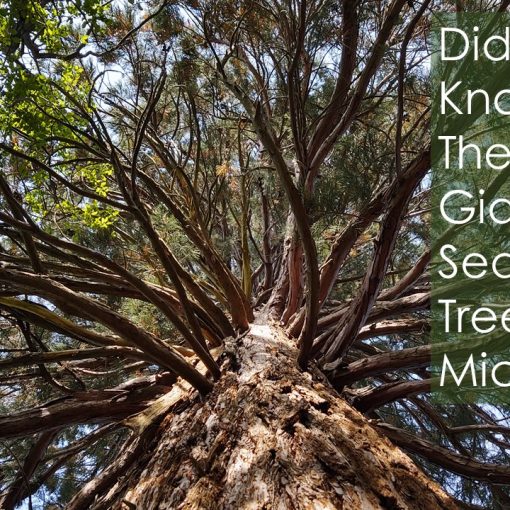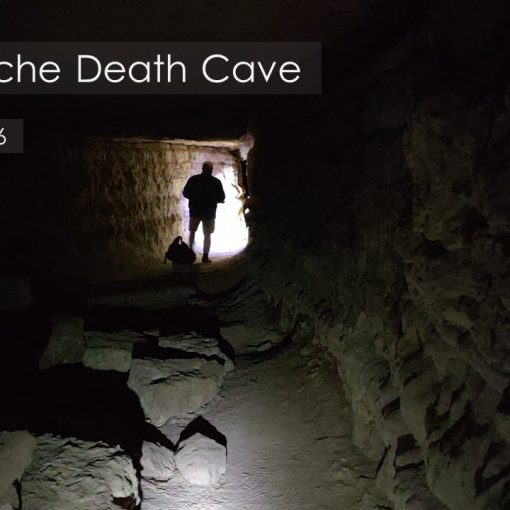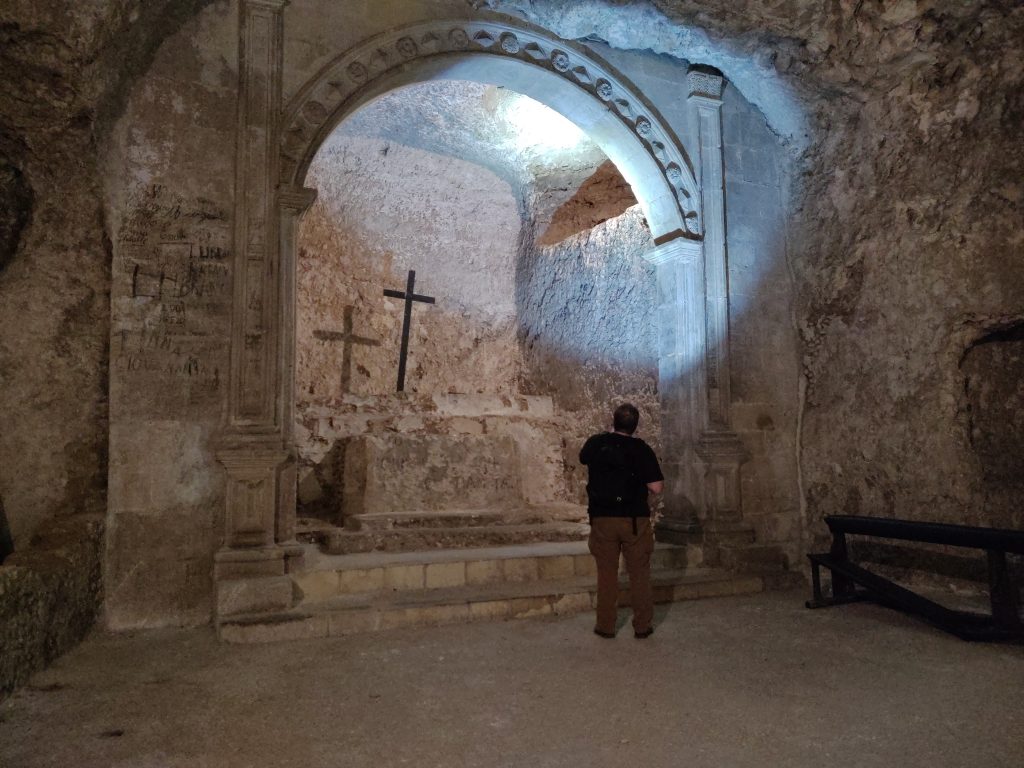
Below Saint Anna Catholic Church
Cagliari, Sardinia
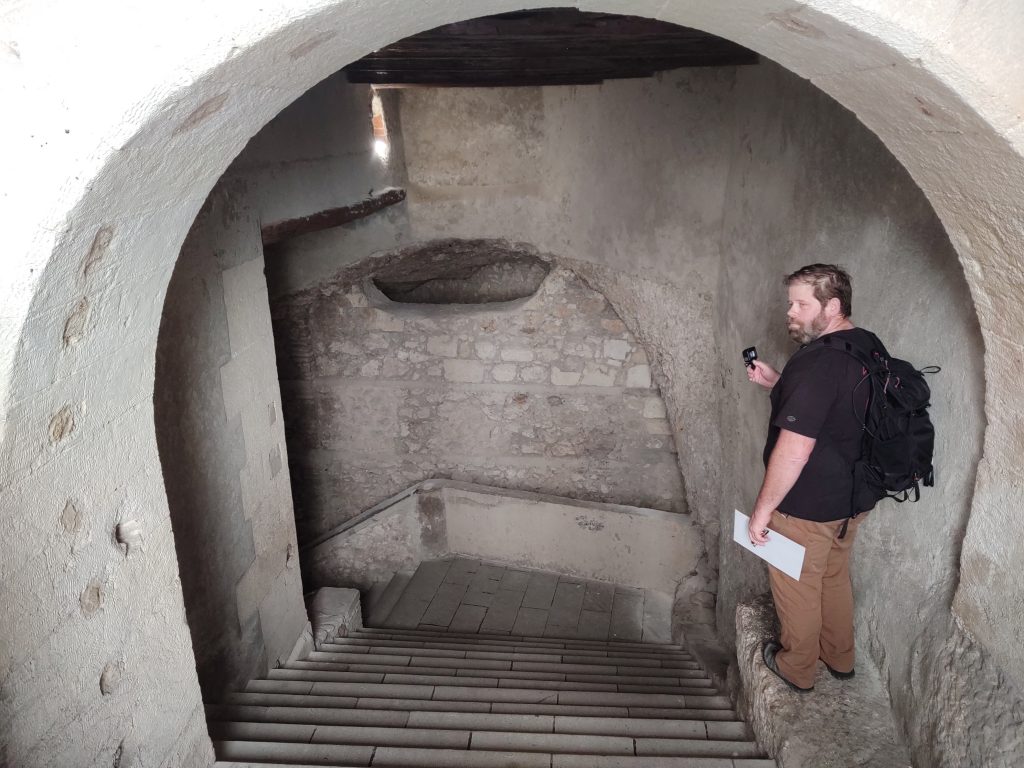
As we descended the stone staircase haunting hymns echoed in the subterranean cavern. Mass was starting above us in Saint Anna’s church. Familiar tunes radiated in Italian.
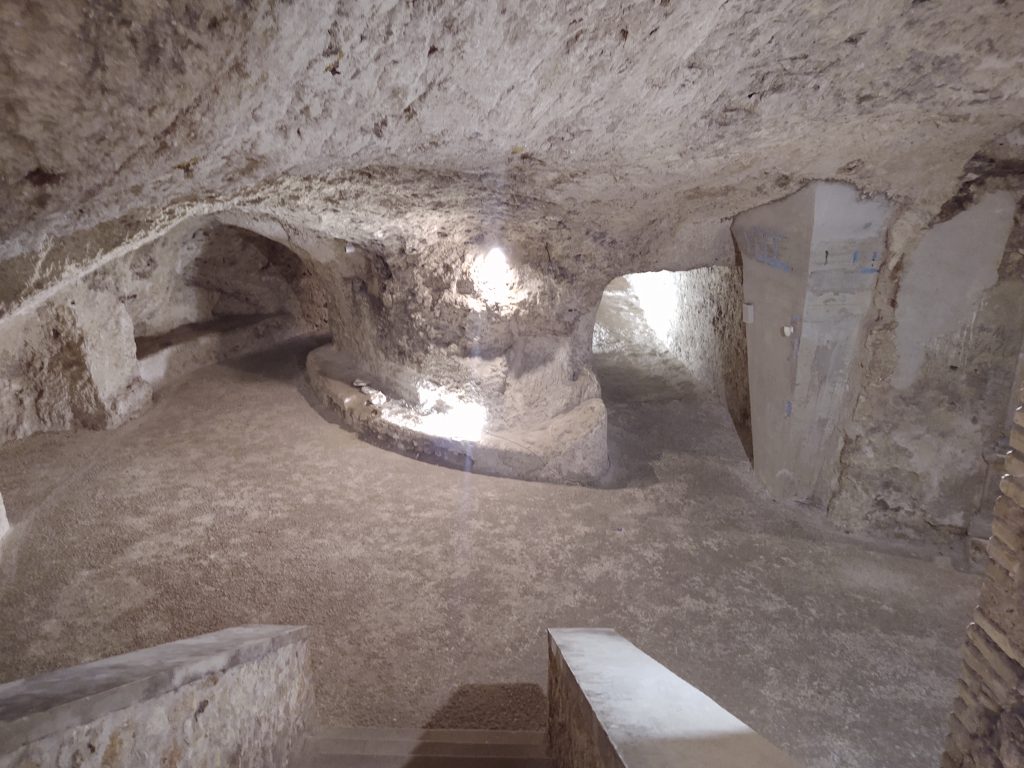
The center column is said to have healing powers.
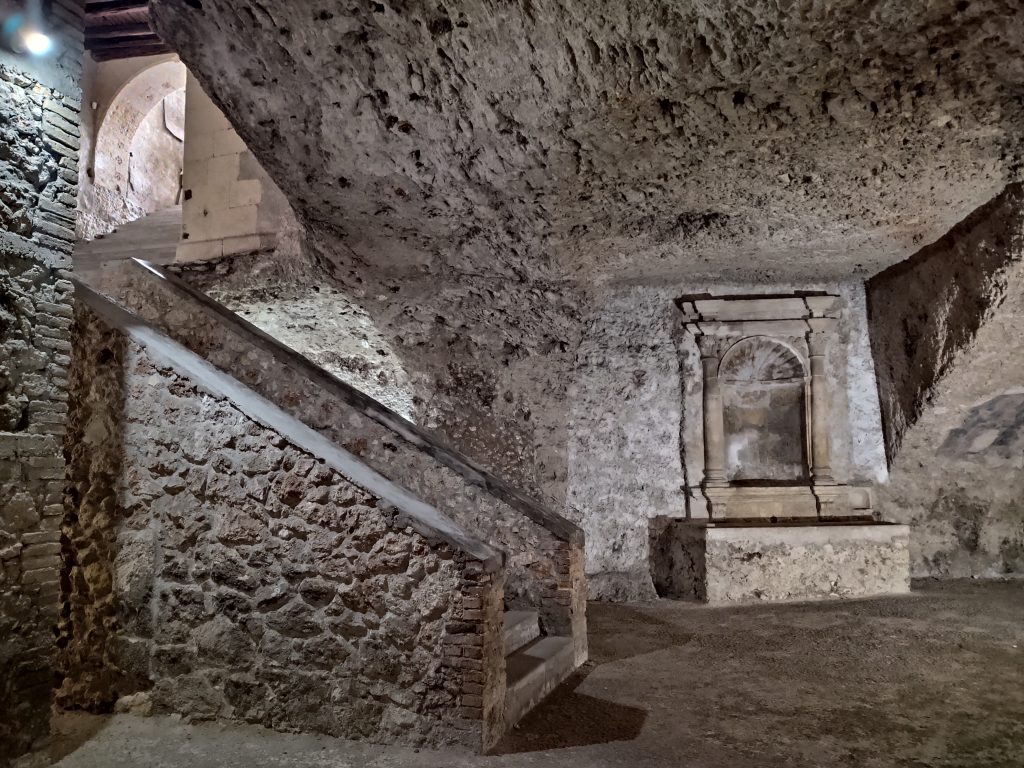
With water droplets dripping and hymns echoing from above we read about this limestone cavern which dates back to the Nuragic and Phoenician-Punic periods of 18th century B.C.E. (Before Christian Era or Before Common Era) People used this space for pagan worship. A mallet with a stone head was found in the 1980’s giving proof of this ancient history.
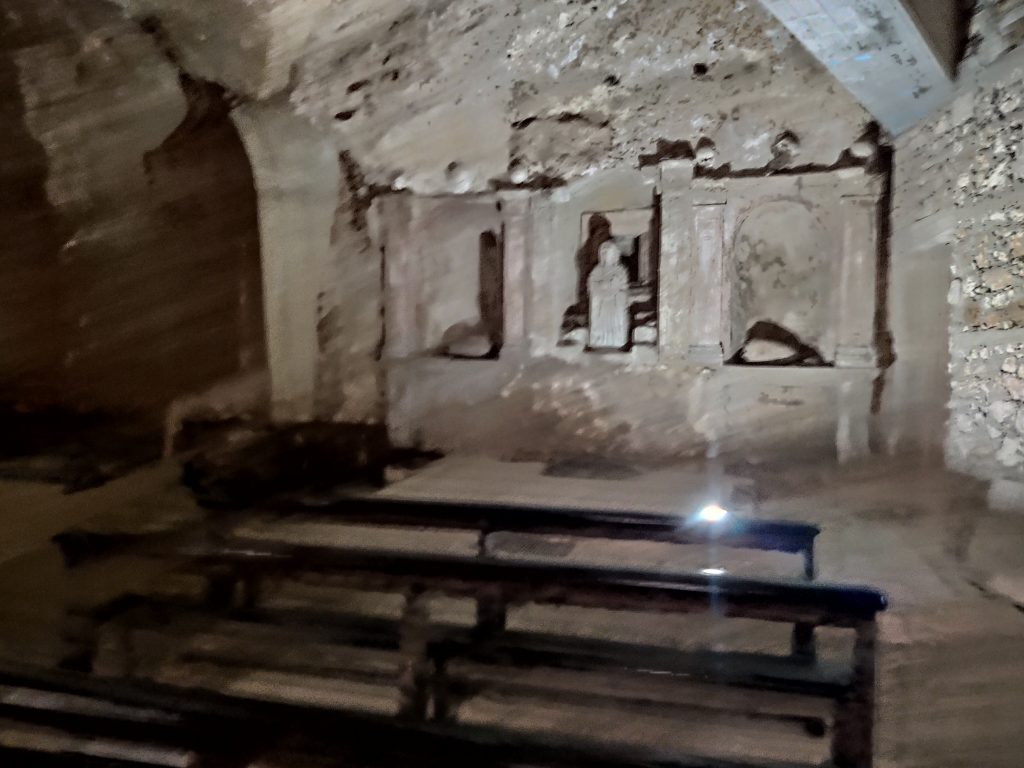
We sat in the pews and considered the centuries of history that has taken place here.
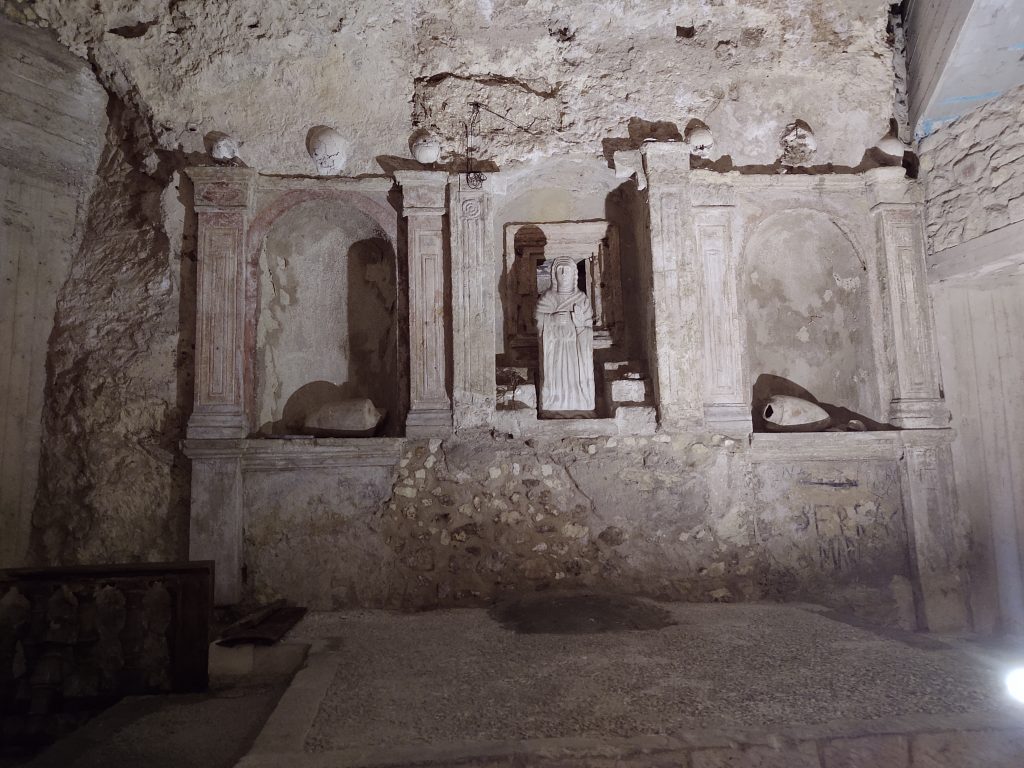
Eusebia and Eusebio, the Bishop of Vercelli.
Saint Restituta, a Catholic church leader made martyr, was driven out of Teniza (Africa) and died by being burned alive (making her a martyr). To become a saint, the Pope had to investigate all aspects of her life, writings and legacy. As well, two miracles needed to have been performed by the candidate. Saint Restituta met these requirements.
During the middle ages 500 A.D. – 1000 A.D. kings from France and England would perform miraculous ceremonies believing that Saint Restituta’s crypt held healing powers.
Throughout the centuries, praying for healing in the crypt has continued. People brought their children who suffered from small pox and had them roll on the dirt floor believing the powder would help cure them. Infertile women would “dance” alone and sometimes with their spouse in this space in hopes of conceiving. (The church began to monitor and discourage the inappropriate behaviors.) But hope in Saint Restituta’s powers continued and still carry on into today’s society.
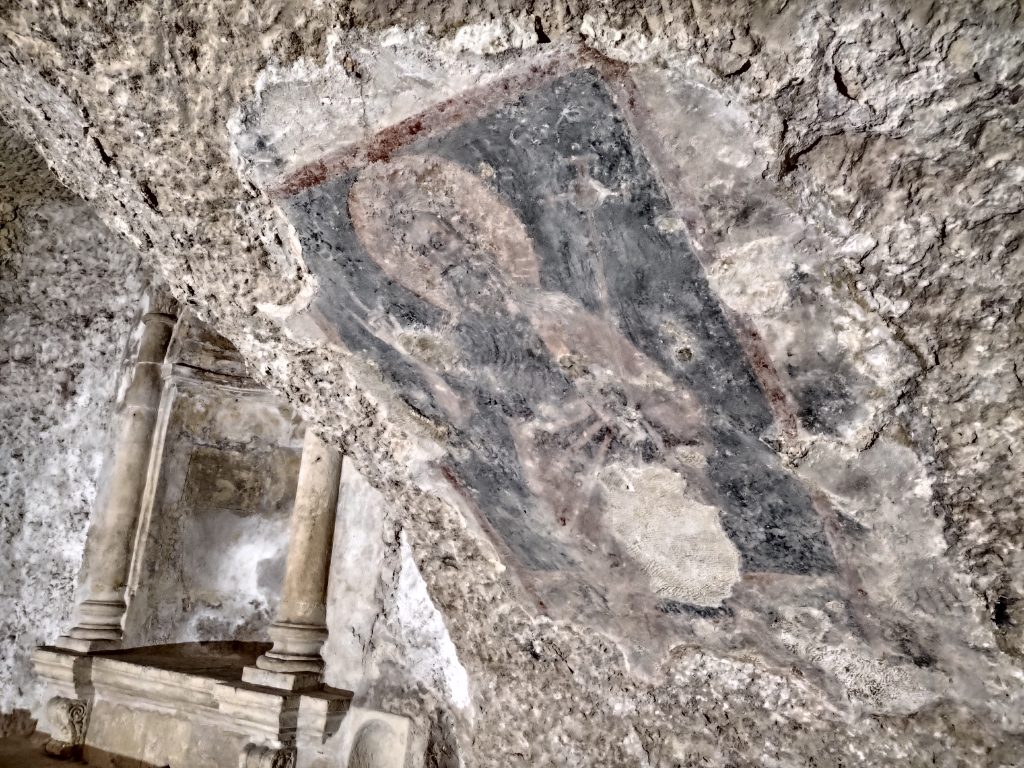
In 1614 three more altars were built for additional saints whose remains were found in a wooden box with a scroll. Saint Guista, Saint Giustina and Saint Enedina relics were placed in these “new” altars. This deep history stretches my mind beyond what I am used to considering.
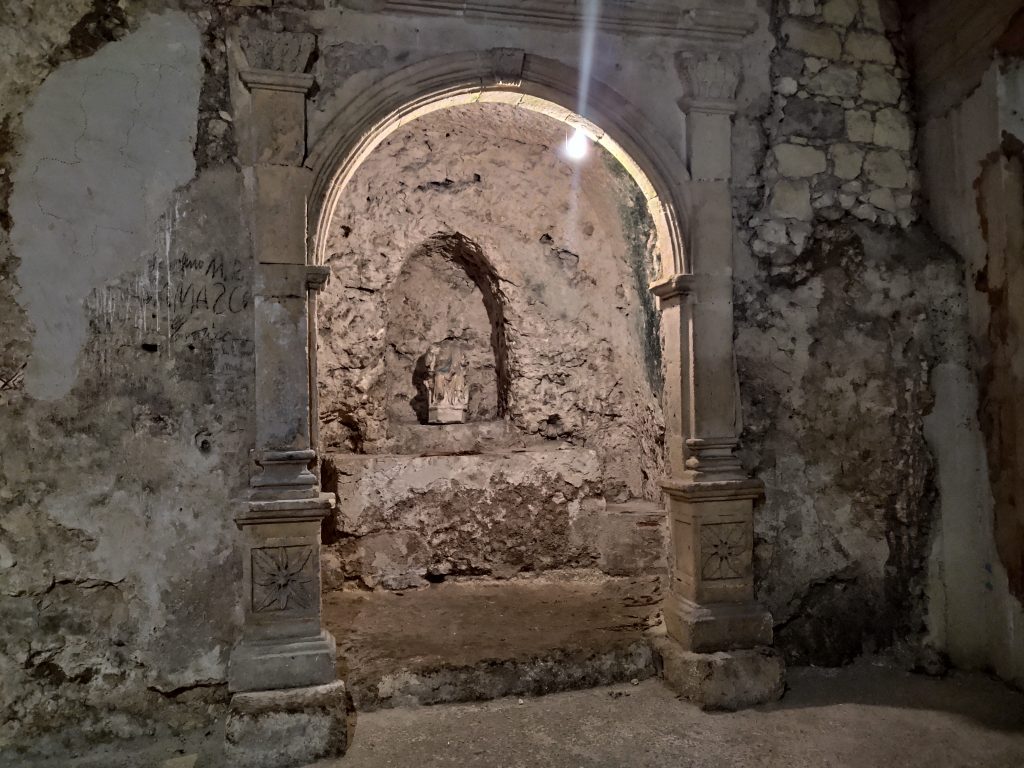
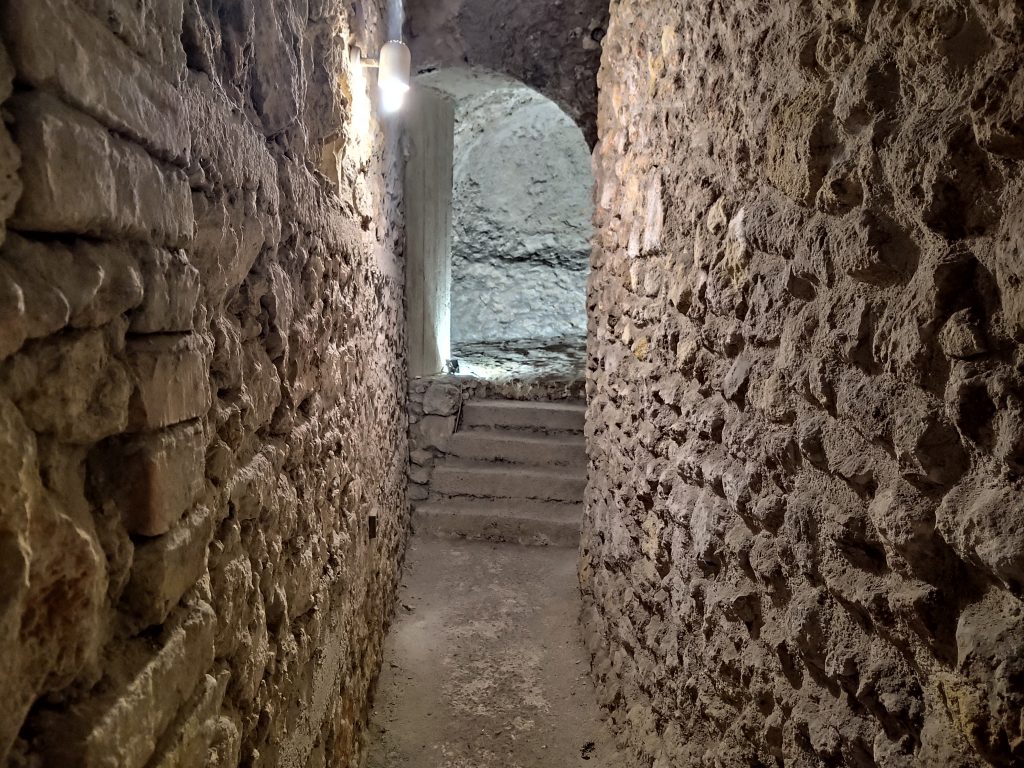
In 1939 during WWII this underground space was used as a bomb shelter for the village. Sadly, on February 17, 1943 a group was waiting to come inside when they were killed by an aircraft shell.
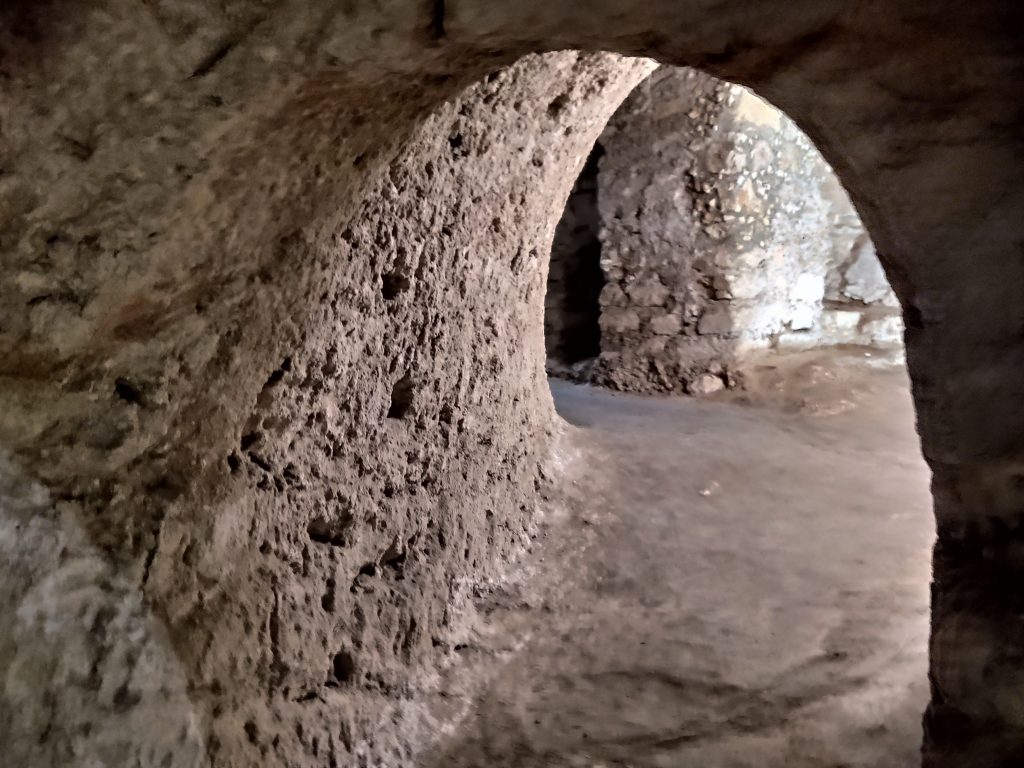
Yet the history here reaches much farther into the past.
As people still arrive here today hoping for healing, I marveled at this deep history reaching into centuries before Christ. As these walls told their stories, I sat and listened. Sardinia was unlike anywhere I had ever been offering so much to ponder and appreciate.



